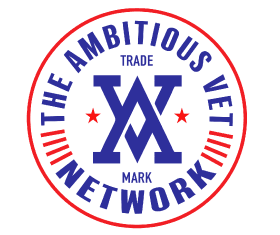Are you a DEI officer or military affairs officer, head of a veteran ERG group in an organization, or a policymaker looking to improve veteran employment outcomes? Are you measuring your success with veterans transitioning into their ideal post-military careers with confidence?
If so… you are reading the right blog.
Let’s shed some light on how to have veterans land more softly into the brand-new civilian workforce by leveraging some lessons we’ve learned while delivering impactful programming to veterans in Fortune 100 companies.
First, we’ll back our experience with some updated market research from LinkedIn. According to the most recent (2023) LinkedIn Veteran Opportunity Report, veterans are highly educated, skilled, and experienced, however, military experience remains undervalued in the civilian workforce. As a result, veterans are half as likely to reach director or vice president leadership roles despite having nearly 2x more work experience than nonveterans.
We believe veterans bring both the practical work experience and the education needed but lack the mindset that it takes to grow and advance into a new culture that is foreign to them.
Here is what we have found to be beneficial in enhancing the veteran transitioning programming experience for post-9/11 veterans.
1. Relevant programming and training that helps them integrate into the culture
After speaking with DOL veteran employment service representatives and military hiring and development heads, we’ve learned that the content or training provided to veterans is not culturally literate, paralleled with their experience, or tied to their needs and pain points entering into a new social climate and way of doing things.
2. More than checking-the-box training for veterans
We have found that the majority of organizations and DOL off-base transition training pilots are mostly checking the box for funding needs. Meaning let’s throw as many veterans as we can through this training and let the machine spit out the good ones and bad ones. Good intentions, a bad judgment call. The approach is more impactful when you are not focused on the number of veterans or trainings delivered but on the individual veterans themselves. Finding a tracking system that ties into both return on investment and drives the organization forward from an each and every individual perspective is possible. You just have to shift your focus and the veterans will show up.
3. Not a one-off workshop
If you have been in the military transition space for longer than a few years you know that most training/learning centers, organizational ERGs, and policymakers are focused on shotgunning both resources and one-off workshops to veterans that overwhelm the veteran, with no observable return on investment, or behavioral change in the veteran themselves. The solution is a multi-month cohort-based program that provides a safe place for veterans to come engage, learn, and apply theories gained in their everyday work environment. While also revealing critical data points that you can use in your annual reports to move the needle forward with the future of work for veterans.
In conclusion, we have a lot of work to do regarding immediate transition programming for the newest generation of veterans entering the workforce every year. It’s one thing to put a badge of honor on your company because you hire “x” number of veterans each year. OR from a DOL standpoint, roll out off-base transition training for veterans backed by MILLIONS of dollars, but you still can’t communicate well with the DOD. If you don’t make the content relevant to the needs for the self-actualization journey each veteran takes, you are essentially fueling the problem and burning money from valuable taxpayers.
If you are looking for a better solution, check out our programs that have been tested within Fortune 100 companies and through off-base transition training centers near you by clicking here.
More About The Ambitious VET Network:
AVN delivers culturally literate corporate learning and development programs to veterans that strengthen their ability to thrive in and contribute to your company’s mission. Our curriculum was developed by veterans for veterans, and backed by research which we believe is integral to a holistic hiring and retention strategy for veteran candidates.

By: Chris Hoffmann, Founder of the Ambitious VET Network

